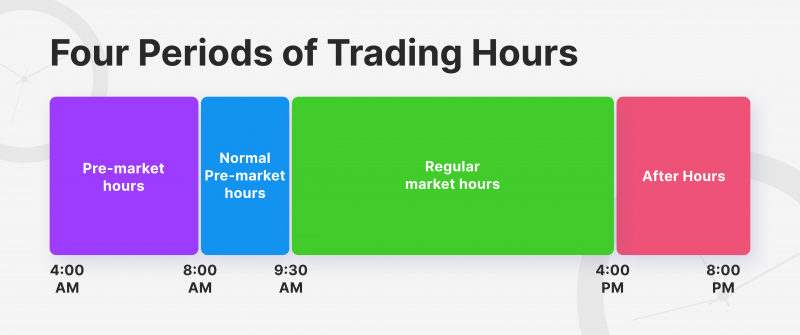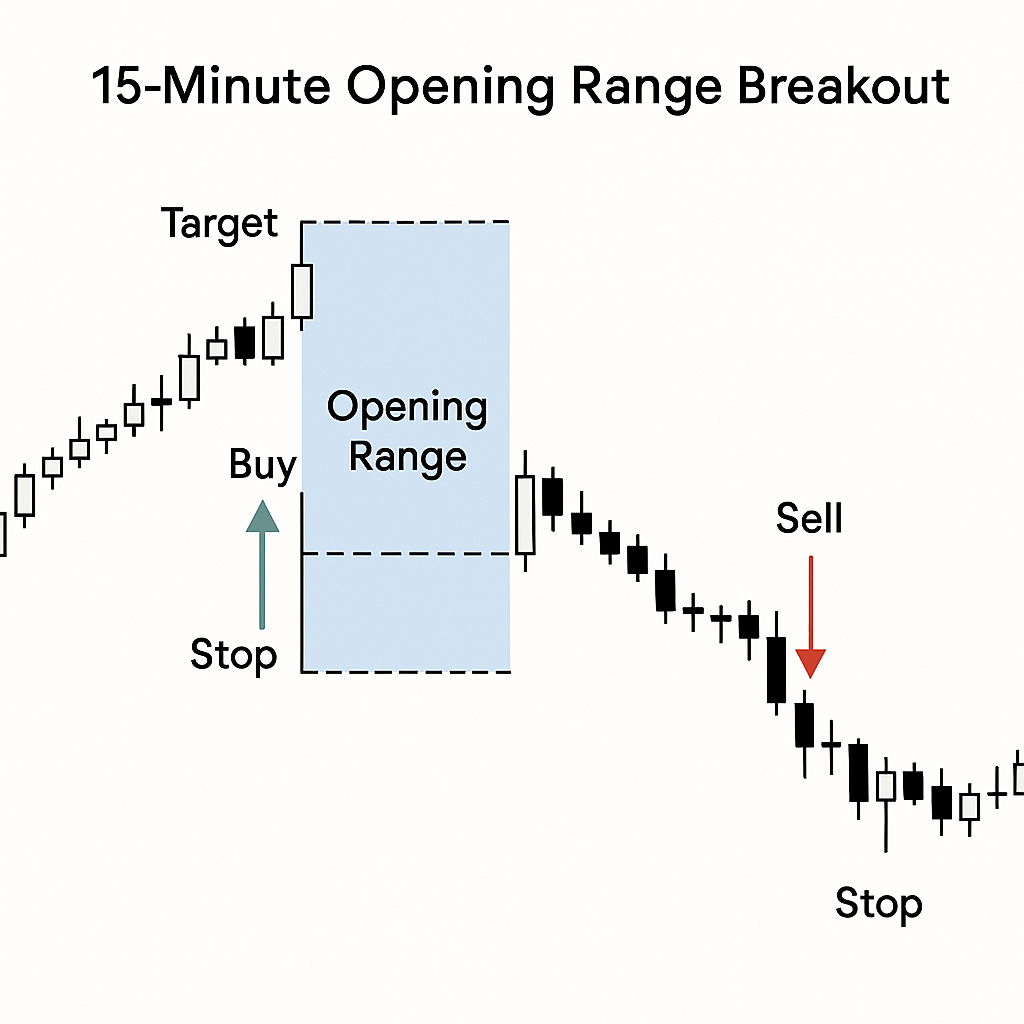Missed a trade because you didn't know the market was already open? You're not alone, as stock market hours differ around the globe and change with daylight saving.
However, there's no reason to worry since this article explores worldwide stock market hours, encompassing the U.S., Europe, and Asia, as well as pre-market and after-hours trading periods.
We also explain how daylight saving time, holidays, and regional trading rules affect trading strategies.
What Time Does the Stock Market Open and Close? Global Overview
| Exchange |
Local Opening Hours |
UTC (Standard Time) |
Notes / Caveats |
| NYSE / NASDAQ (U.S.) |
9:30 AM - 4:00 PM ET |
14:30 - 21:00 UTC |
No lunch break. During U.S. daylight saving (EDT), becomes 13:30-20:00 UTC. Pre-market / after-hours exist. |
| LSE (London Stock Exchange) |
8:00 AM - 4:30 PM London Time |
07:00 - 15:30 UTC |
In summer shifts to BST (+1). No lunch break. |
| Euronext (Paris, Amsterdam, Brussels, etc.) |
9:00 AM - 5:30 PM CET |
08:00 - 16:30 UTC |
During summer (CEST) UTC window shifts −1 hour. |
| Frankfurt (Xetra / DAX) |
9:00 AM - 5:30 PM CET |
08:00 - 16:30 UTC |
Similar DST caveats as above. |
| Tokyo Stock Exchange (TSE) |
9:00 AM - 11:30 AM ; 12:30 PM - 3:30 PM JST |
00:00 - 06:30 UTC |
Japan just extended closing by 30 minutes (from 3:00 to 3:30 PM) starting Nov 2025. No DST. |
| Shanghai Stock Exchange (SSE) |
9:30 AM - 11:30 AM ; 1:00 PM - 3:00 PM CST |
01:30 - 07:00 UTC |
Lunch break 11:30-1:00. No DST. |
| Hong Kong Stock Exchange (HKEX) |
9:30 AM - 12:00 PM ; 1:00 PM - 4:00 PM HKT |
01:30 - 08:00 UTC |
Lunch break 12:00-1:00. No DST. |
| NSE / BSE (India) |
9:15 AM - 3:30 PM IST |
03:45 - 10:00 UTC |
Pre-opening window 9:00-9:15. IST does not observe DST. |
Times are shown in local standard time. During daylight saving (DST), some markets shift by +1 hour.

1) U.S. Stock Market Hours (NYSE & NASDAQ)
Core session: 9:30 AM - 4:00 PM ET
Pre-market session: 4:00 AM - 9:30 AM ET
After-hours session: 4:00 PM - 8:00 PM ET
The first 30 minutes (9:30-10:00 AM) are often the most volatile as overnight news is priced in. The last 30 minutes (3:30-4:00 PM) also see heavy institutional flows.
DST note: From March to November, during daylight saving time in the U.S., the market opens at 1:30 PM UTC (rather than 2:30 PM).
2) European Stock Market Hours
London Stock Exchange (LSE)
Euronext (Paris, Amsterdam, Brussels, etc.)
Frankfurt Stock Exchange (Xetra)
Note: European markets typically do not have lunch breaks but close early on holidays (e.g. Christmas Eve).
3) Asian Stock Market Hours
Tokyo Stock Exchange (TSE, Japan)
Shanghai Stock Exchange (SSE, China)
Hong Kong Stock Exchange (HKEX)
Asian markets often have midday lunch breaks, which reduce liquidity during those periods.
4) Indian Stock Market Hours (NSE & BSE)
Pre-opening session: 9:00 AM - 9:15 AM IST
Core trading: 9:15 AM - 3:30 PM IST
Closing session: 3:40 - 4:00 PM IST (post-close order matching)
What Are the Best Times to Trade Stocks Globally?
U.S. Stocks: 9:30-10:30 AM ET (opening range) & last hour 3:00-4:00 PM ET
Europe: Overlap with U.S. (2:30-4:30 PM CET) is very active
Asia: First hour after the open (e.g. 9:00-10:00 AM local)
The overlap windows (e.g. London-New York) often provide the best liquidity and volatility.
Pre-Market and After-Hours Trading

Pre-Market Trading
U.S. Pre-Market Hours: 4:00 AM to 9:30 AM ET (1:30 PM to 7:00 PM IST)
Generally lower liquidity, but can encounter considerable volatility due to earnings reports or economic metrics.
After-Hours Trading
U.S. After-Hours: 4:00 PM to 8:00 PM ET (1:30 AM to 5:30 AM IST)
During this period, traders respond to late news, leading to wider spreads and slower execution.
Extended sessions (pre-market & after-hours) allow trading beyond the official window, but they have:
Lower liquidity
Wider spreads
Higher volatility risk
Example: Nasdaq's pre-market is often used for earnings-driven moves before the 9:30 AM open.
Brokers may limit access to extended hours or require a higher margin.
Trading Strategies Based on Market Opening Hours

1. Opening Range Breakout
This strategy looks for a price breakout above or below the range formed during the first 15-30 minutes of trading. It works best during high-volume sessions such as the NYSE opening hours.
2. Gap and Go
Used when stocks open with a significant price gap due to overnight news. Traders look for continuation in the direction of the gap.
3. Arbitrage Opportunities
Arbitrageurs take advantage of timing discrepancies in international markets to capitalize on inefficiencies. For instance, ADRs on U.S. exchanges might show price fluctuations before the opening of local Indian shares.
Frequently Asked Questions
Q1: Can I Trade Before the Market Officially Opens?
Yes. Pre-market trading exists (e.g. 4:00-9:30 AM ET for Nasdaq/NYSE), but liquidity is lower.
Q2: Why Is Opening Volatility Higher?
Overnight news, institutional rebalancing, and accumulated orders make the first 30 minutes volatile.
Q3: Do All Stock Markets Open at the Same Time Globally?
No. Each operates in local time zones. Some (like Asia) also include lunch breaks.
Conclusion
In conclusion, understanding global stock market hours is crucial for timing trades, managing risk, and seizing volatility.
Whether you're trading the U.S. opening bell, the London-New York overlap, or the Tokyo morning session, aligning with exchange windows gives you a crucial edge.
Remember: Always double-check your broker's session hours, daylight saving changes, and holiday calendars before trading.
Disclaimer: This material is for general information purposes only and is not intended as (and should not be considered to be) financial, investment or other advice on which reliance should be placed. No opinion given in the material constitutes a recommendation by EBC or the author that any particular investment, security, transaction or investment strategy is suitable for any specific person.
























